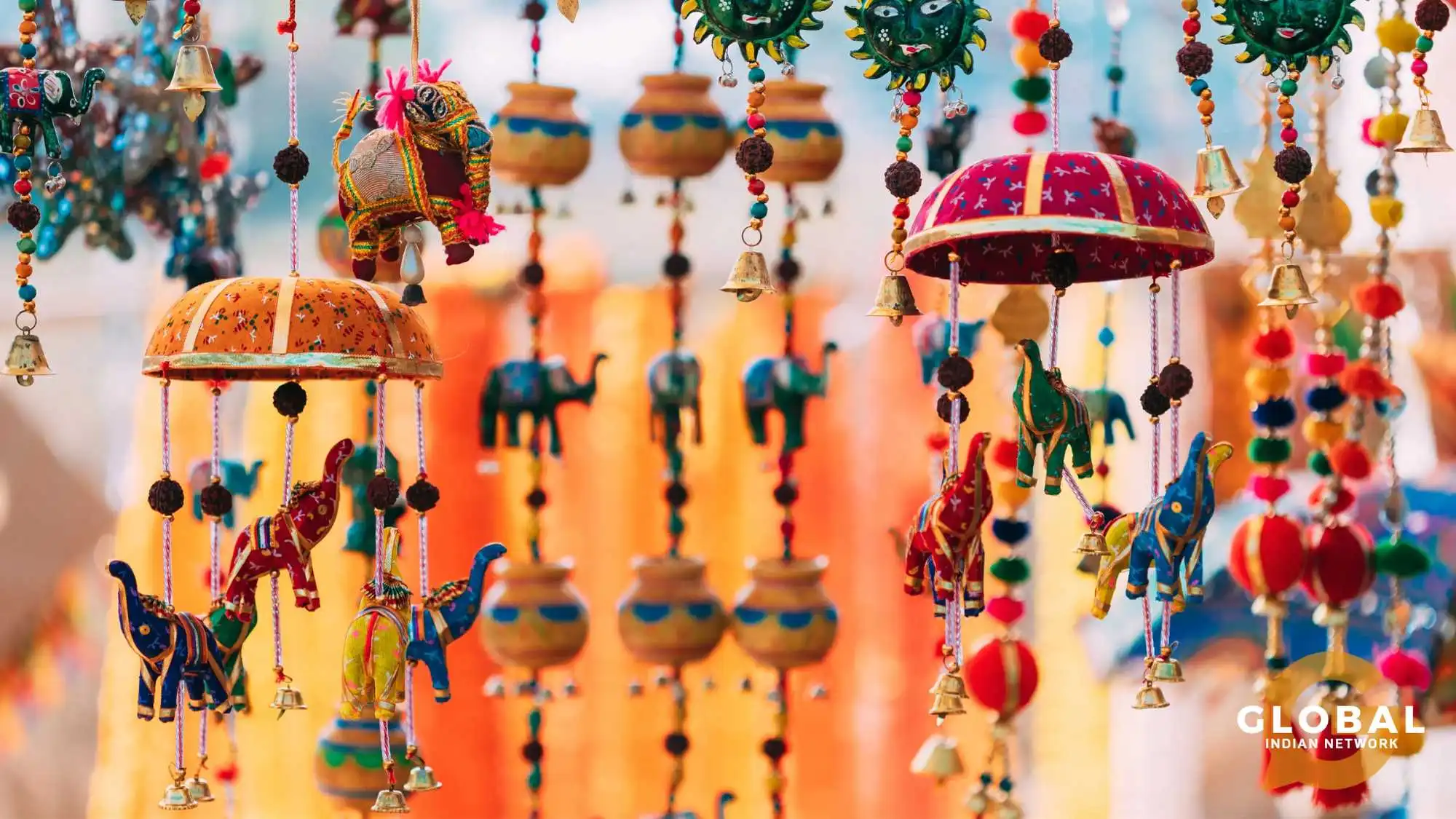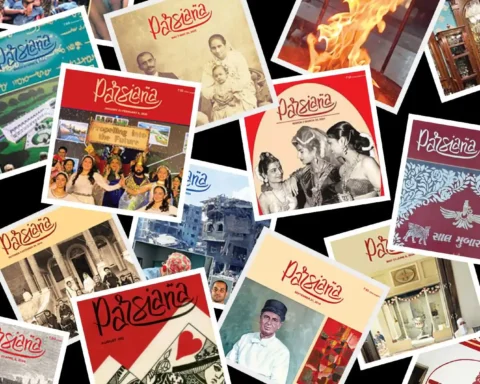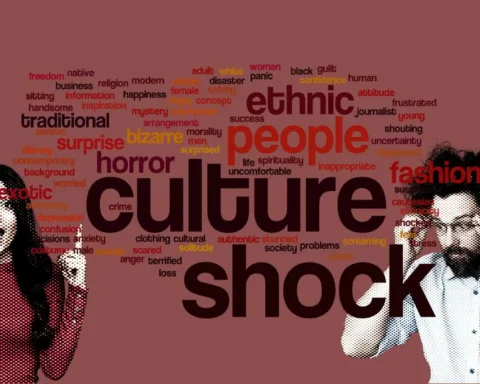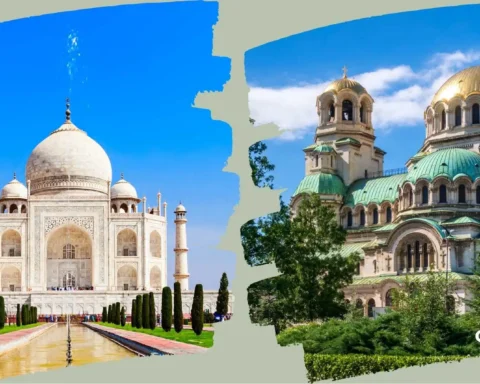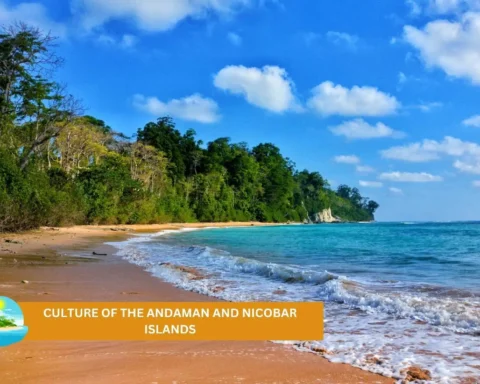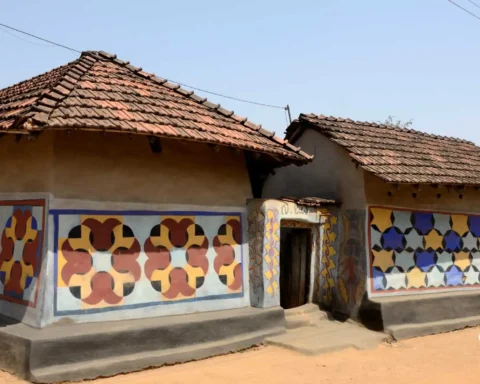India, a land of diverse traditions and rich heritage, is undergoing a rapid transformation influenced by popular culture. From Bollywood films to social media trends, popular culture in India is ubiquitous, shaping the lifestyles and mindsets of millions. But as these modern influences gain prominence, there’s a growing concern: Is the popular culture in India killing tradition? This article delves into the complex interplay between contemporary popular culture and traditional values in India, examining whether the former is a threat or a complement to the latter.
Table of Contents
Defining Popular Culture in India
Popular culture in India encompasses the contemporary expressions of entertainment, fashion, media, and lifestyle that resonate widely across diverse demographics. The dominance of Bollywood cinema, regional film industries, television serials, reality shows, and music videos, and the pervasive influence of social media platforms such as Instagram, YouTube, and TikTok characterizes it. This vibrant cultural landscape reflects both traditional elements and modern trends, creating a dynamic blend that appeals to a broad audience. Popular culture in India is shaped by historical legacies, technological advancements, economic changes, and global influences, making it a powerful force in shaping societal norms, values, and collective identities.
Evolution of Indian Culture and Popular Culture
Indian culture has undergone significant transformations over the centuries, influenced by various historical, social, and political factors. These changes are vividly reflected in the evolution of popular culture.
Ancient and Medieval Periods
In ancient times, India’s cultural richness was epitomized by epic literature, classical music, and traditional dance forms. Medieval India saw the synthesis of different artistic elements, particularly during the Mughal era, which influenced art, architecture, and cuisine. These historical layers are often depicted in popular culture, providing a rich backdrop for storytelling in films and literature.
Colonial Era
The colonial period introduced new cultural dynamics, including Western education, legal systems, and political structures. The British influence on Indian culture is evident in the English language’s prevalence, architectural styles, and the modernization of educational institutions. Popular culture often explores this colonial legacy through historical dramas and literature, reflecting on the complexities of this era.
Post-Independence
Since gaining independence in 1947, India has experienced rapid modernization and urbanization. The economic liberalization of the 1990s brought a wave of global influences, transforming lifestyles, media, and consumer culture. Bollywood and regional cinemas embraced new themes and technologies, creating a more dynamic and diverse cultural landscape. The rise of digital media has further revolutionized popular culture, with streaming platforms and social media becoming major channels for content consumption.
Factors Influencing Popular Culture in India
Popular culture in India is a dynamic and multifaceted phenomenon shaped by a variety of factors that reflect the country’s diversity and complexity. From historical legacies to modern technological advancements, several key elements drive the evolution and influence of popular culture in India. Understanding these factors provides a deeper insight into how and why popular culture evolves in the ways that it does.
Historical and Cultural Heritage
Historical and cultural heritage deeply influences popular culture in India, with ancient traditions, epics, and historical events often depicted in films, literature, and art.
Colonial Influence and Modernization: The colonial period left a significant imprint on India’s cultural landscape. British colonial rule introduced new forms of education, communication, and entertainment, which mingled with indigenous traditions. The establishment of the printing press, for instance, enabled the dissemination of literature and ideas, fostering a new cultural consciousness. Post-independence, there was a concerted effort to modernize and industrialize, which included the development of the film and television industries.
Traditional Narratives and Mythology: India’s rich mythology and traditional narratives have always played a crucial role in shaping its popular culture. Stories from epics like the Ramayana and Mahabharata, as well as various regional folklore, have been adapted into films, television serials, and literature. These narratives not only entertain but also reinforce cultural values and social norms.
Technological Advancements
Technological advancements have revolutionized popular culture in India, with the proliferation of digital media and the internet enabling widespread access to diverse content.
Digital Media and Internet Penetration: The rapid spread of digital media and Internet penetration has revolutionized content creation and consumption in India. With the advent of smartphones and affordable data plans, a vast segment of the population now has access to a wide array of digital content. Streaming services like Netflix, Amazon Prime, and Disney+ Hotstar have transformed how Indians watch movies and TV shows, offering a diverse range of content that caters to various tastes and preferences.
Social Media Platforms: Social media platforms such as Instagram, YouTube, and TikTok have become significant drivers of popular culture in India. These platforms allow for the creation and sharing of content at an unprecedented scale, giving rise to new trends, memes, and influencers. Social media has democratized content creation, enabling individuals from diverse backgrounds to participate in and shape popular culture.
Economic Factors
Economic factors significantly influence popular culture in India, with the rise of consumer culture and increased disposable incomes driving demand for diverse entertainment options.
Liberalization of the Economy: The liberalization of the Indian economy in the 1990s had a profound impact on popular culture. Economic reforms led to increased foreign investment and the entry of global media and entertainment companies into the Indian market. This influx of capital and competition spurred innovation and diversification in the media and entertainment sectors, leading to higher production values and a broader range of content.
Consumer Culture and Commercialization: The rise of consumer culture in India has significantly influenced popular culture. With its increasing disposable income, the growing middle class has become a key target audience for advertisers and media companies. This commercialization drives the production of content that appeals to mass tastes and preferences, often emphasizing glamour, consumerism, and aspirational lifestyles.
Sociopolitical Environment
The sociopolitical environment in India shapes popular culture by influencing the themes and narratives explored in media and entertainment.
Government Policies and Regulations: Government policies and regulations play a crucial role in shaping popular culture in India. The Union Ministry of Culture, along with other regulatory bodies, oversees the promotion and preservation of cultural heritage while also encouraging contemporary cultural expressions. Policies related to censorship, content regulation, and intellectual property rights influence the kind of content that is produced and disseminated.
Social Movements and Public Discours: Social movements and public discourse around issues such as gender equality, caste discrimination, and LGBTQ+ rights have also shaped popular culture. These movements influence the themes and narratives explored in films, TV shows, and digital content, promoting a more inclusive and diverse cultural landscape. Content creators are increasingly addressing social issues, reflecting and contributing to broader societal changes.
Regional Diversity
Regional diversity profoundly impacts popular culture in India, with various states offering unique languages, traditions, and artistic expressions that enrich the national cultural landscape.
Cultural Variations: The cultural diversity of India, exemplified by the distinct traditions of North and South India, significantly influences popular culture. Bollywood, based in Mumbai, largely caters to Hindi-speaking audiences in North India, while regional film industries in Tamil Nadu, Andhra Pradesh, and other southern states produce content in local languages, reflecting regional traditions and sensibilities. This regional diversity enriches the overall cultural tapestry of the country.
Influence of Regional Cinema: Regional cinema has gained prominence and influence, bringing local stories and cultural nuances to a broader audience. Films from industries like Tollywood (Telugu cinema) and Kollywood (Tamil cinema) have not only achieved commercial success but have also garnered critical acclaim, contributing to a more diverse and representative popular culture.
Globalization and Cross-Cultural Exchange
Globalization fosters cross-cultural exchange, infusing Indian popular culture with international influences from other cultures of the world.
Influence of Western Culture: Globalization has facilitated the exchange of cultural ideas and practices between India and the rest of the world. Western music, fashion, and film have significantly influenced Indian popular culture, introducing new styles and genres. This cross-cultural exchange has led to the hybridization of cultural expressions, where traditional Indian elements are fused with global trends to create unique and innovative forms of entertainment.
South Asian and East Asian Cultural Exchange: Cultural exchange within the broader South Asian region, as well as with East and Southeast Asia, also influences popular culture in India. Indian films and music are popular in neighbouring countries, while cultural products from South Korea (K-pop and K-dramas) and Japan (anime and manga) have found a significant following in India. This intra-Asian cultural exchange enriches India’s popular culture landscape, contributing to its diversity and dynamism.
Academic and Intellectual Contributions
Academic and intellectual contributions shape popular culture in India through critical analyses, research, and theoretical frameworks that inform cultural discourse.
Influence of Educational Institutions: Educational institutions, both Indian and international, play a crucial role in shaping popular culture. Universities like Cambridge University Press, University of California Press, and Oxford University Press publish research and scholarship that influence cultural discourse. Indian educational institutions also contribute to this dialogue, promoting cultural studies and fostering critical engagement with popular culture.
Contributions of Scholars and Critics: Scholars and critics, such as John M. MacKenzie and John Storey, have profoundly impacted the understanding and critique of popular culture. Their work provides theoretical frameworks and critical analyses that inform public discourse and influence content creation in the media and entertainment industries.
The Unstoppable Rise of Popular Culture in India
Popular culture in India, while seemingly a modern phenomenon, has roots that trace back to the early 20th century. The advent of cinema and television marked the beginning of a new cultural era, eventually leading to the establishment of Bollywood and a vibrant entertainment industry.
A Historical Perspective
Popular culture in India has evolved over the decades, starting with early 20th-century cinema. The silent films of the 1910s and 1920s laid the groundwork for the burgeoning Bollywood industry. The release of “Alam Ara” in 1931, India’s first sound film, marked a significant milestone, propelling the film industry into a new era. By the mid-20th century, Bollywood had become a cultural behemoth, producing films that blended traditional themes with modern storytelling techniques.
Television further amplified popular culture’s reach in the 1980s and 1990s. Shows like “Ramayan” and “Mahabharat” captivated millions, merging traditional narratives with modern broadcasting. The liberalization of the economy in the 1990s accelerated the influx of global media, music, and fashion, setting the stage for the current explosion of popular culture.
Modern Manifestations
Today, popular culture in India encompasses a wide range of media, including Bollywood films, television serials, reality shows, music videos, social media trends, and digital content. Streaming platforms like Netflix, Amazon Prime, and Disney+ Hotstar have revolutionized content consumption, offering a plethora of choices that cater to diverse tastes. Social media platforms such as Instagram, YouTube, and TikTok have given rise to a new breed of celebrities and influencers who wield significant cultural clout.
How Popular Culture in India Brings People Together
Popular culture has a remarkable ability to create a shared space for diverse groups. In a country as multifaceted as India, it often serves as a unifying force that transcends linguistic, religious, and regional differences.
A Common Ground
One of the most significant impacts of popular culture is its ability to foster a sense of community and collective identity. Bollywood movies appeal to a broad audience with their blend of drama, romance, and music. Songs from these films become anthems, sung at weddings, festivals, and other social gatherings, helping to forge a common cultural ground.
Celebrating Diversity
Popular culture in India is not monolithic; it reflects and celebrates the country’s diversity. Regional cinema, for example, has seen a significant resurgence, with Tamil, Telugu, Marathi, and Bengali films gaining national and international acclaim. These films often bring local stories, traditions, and dialects to a broader audience, promoting cultural exchange and understanding. Television shows and web series also explore diverse narratives, addressing issues related to gender, caste, and social justice.
The Interplay Between Tradition and Popular Culture
The relationship between tradition and popular culture in India is complex and characterized by both conflict and collaboration. While popular culture sometimes challenges traditional norms, it also frequently incorporates and adapts traditional elements.
Fusion and Adaptation
Rather than outrightly displacing tradition, popular culture in India often incorporates and adapts traditional elements. Bollywood movies frequently draw on mythological themes, classical music, and traditional dance forms. Festivals like Diwali, Holi, and Durga Puja are portrayed in films and TV shows, highlighting their cultural significance.
Fashion Trends
Fashion in India is a domain where tradition and popular culture intersect. Designers blend traditional textiles and motifs with contemporary styles, creating outfits that honour heritage while appealing to modern sensibilities. Shows like the Fashion Design Council of India (FDCI) Fashion Week demonstrate how traditional craftsmanship is being reinterpreted for today’s audiences. This fusion of old and new is a testament to the dynamic nature of Indian fashion.
The Challenges and Criticisms
Despite its many positive aspects, the rise of popular culture in India is not without its challenges. One major criticism is the commercialization and homogenization of cultural expressions, leading to the dilution of traditional practices and values.
Commercialization and Homogenization
The drive for mass appeal can sometimes reduce rich traditions to mere commodities. The depiction of festivals and rituals in movies and advertisements often focuses more on the spectacle than the underlying cultural and spiritual significance. This commercialization can strip traditions of depth and meaning, transforming them into superficial displays.
Cultural Appropriation
Cultural appropriation, where elements of a culture are borrowed and used out of context, is another contentious issue. This is particularly evident in fashion and entertainment, where traditional symbols and attire are sometimes used inappropriately, sparking controversy and backlash.
Regional Perspectives: North and South India
The impact of popular culture varies across different regions in India, each with its unique cultural landscape.
North India: A Melting Pot of Influences
North India, with its historical sites like the Chaturbhuj Temple and the rich heritage of Uttar Pradesh, has seen a vibrant blend of traditional and popular culture. Bollywood, based in Mumbai, has a significant influence, shaping trends in music, fashion, and lifestyle. The region’s festivals, such as Diwali and Holi, are prominently featured in movies and television, reinforcing their cultural importance while adapting to modern sensibilities.
South India: A Stronghold of Tradition
South India, home to ancient temples like the Chennakesava Temple in Andhra Pradesh, has a deeply rooted cultural heritage. The region’s cinema, particularly Tamil and Telugu films, reflects a strong connection to traditional narratives while embracing contemporary themes. Music and dance forms like Carnatic music and Bharatanatyam continue to thrive, often finding new expressions in popular culture.
Striking a Balance: The Way Forward
Navigating the complexities of tradition and popular culture requires continuous dialogue, adaptation, and mutual respect. Embracing hybrid identities, promoting education and awareness, supporting traditional arts, and practising responsible media representation are crucial steps.
Embracing Hybrid Identities
Indian society is inherently pluralistic, and this plurality can be a strength. By recognizing that tradition and modernity are not mutually exclusive, individuals can forge identities that are both rooted and dynamic. This approach allows for a richer cultural experience that honours the past while embracing the present.
Education and Awareness
Education plays a crucial role in preserving traditions while engaging with popular culture. Schools and cultural institutions can promote awareness of India’s diverse heritage, encouraging students to appreciate and respect traditional practices. At the same time, media literacy programs can help young people critically engage with popular culture and understand its influences and implications.
Supporting Traditional Arts
Supporting traditional arts and crafts through government initiatives, NGOs, and private enterprises is vital. Providing platforms for traditional artists, offering grants and subsidies, and integrating traditional arts into mainstream cultural events can help sustain these practices. By ensuring that traditional artists receive recognition and fair compensation, the value of their contributions can be reaffirmed.
Responsible Media Practices
The media industry has a responsibility to balance commercial interests with cultural sensitivity. Filmmakers, content creators, and advertisers should strive to portray traditions authentically and respectfully. This includes consulting with cultural experts, representing diverse perspectives, and avoiding stereotypes and clichés.
Conclusion
With its vibrant and dynamic expressions, popular culture in India is a powerful force that shapes societal norms and values. While it poses challenges to traditional practices, it also offers opportunities for preserving and revitalizing cultural heritage. The interplay between popular culture and tradition is complex, marked by both conflict and collaboration. Ultimately, the question of whether popular culture is killing tradition in India cannot be answered with a simple yes or no. Instead, it is a nuanced relationship that requires continuous dialogue, adaptation, and mutual respect. By embracing both tradition and modernity, India can navigate this cultural evolution, ensuring that its rich heritage continues to thrive in a rapidly changing world.
FAQs
What is India’s main culture?
India’s main culture is a blend of diverse traditions, languages, and religions, deeply rooted in ancient civilizations and characterized by rich heritage and vibrant festivals. It encompasses a syncretic mix of Hinduism, Islam, Christianity, Sikhism, Buddhism, and Jainism, reflecting the country’s pluralistic society.
Why is pop culture important in India?
Pop culture is important in India because it reflects and shapes societal values, trends, and identities, providing a platform for diverse voices and contemporary expressions. It also unites people across different regions and backgrounds, fostering a sense of shared experience and cultural cohesion.
How has Mass-produced popular culture changed people?
Mass culture has changed people by making entertainment and trends widely accessible, influencing lifestyles, fashion, and social norms. It has also facilitated a shared cultural experience, connecting individuals across diverse backgrounds through common interests and media consumption.




